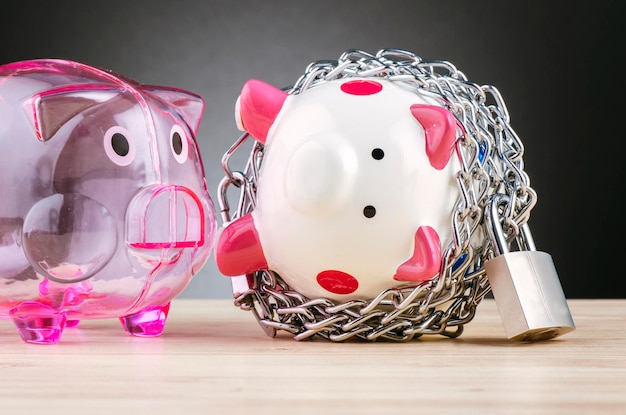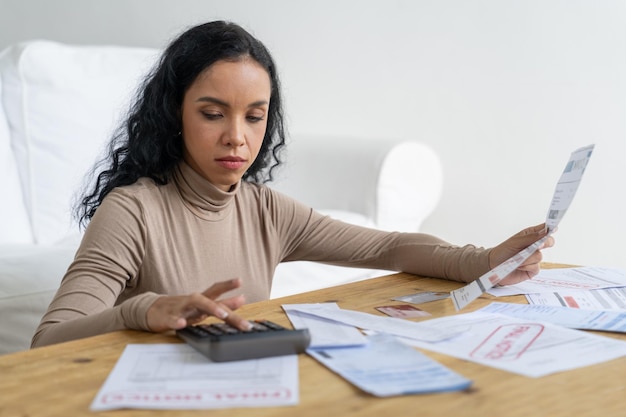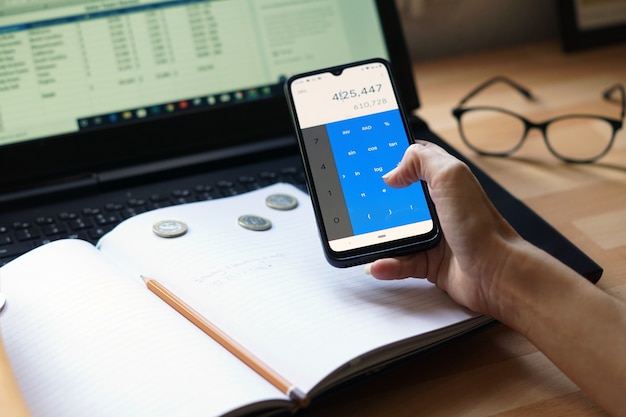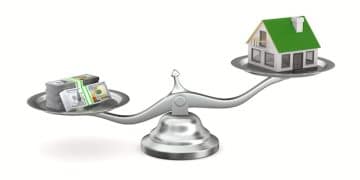Is Your Emergency Fund Ready? A 2025 Checklist for 6 Months of Expenses

Preparing your emergency fund for 6 months of expenses is crucial for financial stability; this 2025 checklist helps you assess your readiness, calculate your needs, identify funding sources, and maintain your fund effectively.
Is your emergency fund ready for 6 months of expenses? Financial security starts with preparedness, and having an emergency fund can be a lifesaver when unexpected events occur. Let’s ensure you’re set for 2025.
Why You Need an Emergency Fund
An emergency fund acts as a financial safety net, providing a cushion during unexpected events. It’s not just about having money; it’s about peace of mind.
Life is unpredictable. Job loss, medical emergencies, or unexpected home repairs can happen to anyone. Without an emergency fund, you might be forced to take on debt, which can be costly and stressful.
Avoiding Debt
One of the primary benefits of an emergency fund is avoiding high-interest debt. Instead of using credit cards or taking out loans, you can draw from your fund.
Peace of Mind
Knowing you have funds available can significantly reduce stress and anxiety. This peace of mind allows you to focus on resolving the emergency rather than worrying about how to pay for it.
- Avoid high-interest debt during emergencies.
- Reduce stress and anxiety by knowing you’re prepared.
- Maintain financial stability during unexpected life events.
Ultimately, an emergency fund is an essential part of a robust financial plan. It’s about being proactive and prepared for whatever life throws your way.
Calculating Your 6-Month Expenses: A Step-by-Step Guide
Knowing how much to save is the first step. Calculating your 6-month expenses accurately will help you set a realistic savings goal.
Start by listing all your monthly expenses. Include everything from rent or mortgage payments to groceries, utilities, transportation, and insurance.

List Your Monthly Expenses
Create a comprehensive list of your monthly expenses. Don’t forget variable costs like entertainment and dining out.
Multiply by Six
Once you have your total monthly expenses, multiply that number by six. This gives you the total amount you need for your 6-month emergency fund.
- Create a detailed list of all monthly expenses.
- Include both fixed and variable costs.
- Multiply your total monthly expenses by six.
By following these steps, you can determine the precise amount needed for your emergency fund, setting a clear and achievable target.
Building Your Emergency Fund: Practical Strategies for 2025
Saving money can be challenging, but with the right strategies, you can build your emergency fund effectively.
Start by creating a budget and identifying areas where you can cut back. Even small savings can add up over time. Automate your savings by setting up regular transfers from your checking account to your savings account.
Automate Your Savings
Set up automatic transfers from your checking account to your savings account. This makes saving effortless and consistent.
Cut Unnecessary Expenses
Identify areas in your budget where you can cut back. Consider reducing entertainment expenses, dining out, or subscription services.
- Automate savings to ensure consistent contributions.
- Reduce unnecessary expenses to free up more funds.
- Consider a side hustle to boost your income.
Developing effective savings strategies is crucial for building a robust emergency fund. Consistency and discipline are key to reaching your financial goals.
Where to Keep Your Emergency Fund: Best Accounts for 2025
Where you keep your emergency fund is just as important as how much you save. Choose accounts that offer both liquidity and security.
High-yield savings accounts (HYSAs) are a great option because they offer higher interest rates than traditional savings accounts. Money market accounts are another safe and liquid option. Avoid investing your emergency fund in volatile assets like stocks.

High-Yield Savings Accounts (HYSAs)
HYSAs offer higher interest rates than traditional savings accounts, helping your money grow faster.
Money Market Accounts
Money market accounts are another safe and liquid option, often offering competitive interest rates.
- Opt for high-yield savings accounts for better interest rates.
- Consider money market accounts for added liquidity and security.
- Avoid investing your emergency fund in volatile assets.
Selecting the right account for your emergency fund ensures that your money is both accessible and growing safely. Prioritize liquidity and security when making your choice.
Maintaining Your Emergency Fund: A Long-Term Strategy
Building an emergency fund is just the beginning. Maintaining it over the long term is equally important.
Regularly review your expenses and savings to ensure your fund still covers six months of expenses. Replenish your fund after using it for an emergency. Consider increasing your fund if your expenses increase or your financial situation changes.
Regularly Review Your Fund
Periodically review your expenses and savings to ensure your fund still meets your needs.
Replenish After Use
After using your emergency fund, make it a priority to replenish it as quickly as possible.
- Regularly review your fund to ensure it meets your current needs.
- Replenish your fund after each use to maintain its strength.
- Adjust your fund as your financial situation changes.
Maintaining your emergency fund requires ongoing effort and attention. By regularly reviewing and replenishing your fund, you can ensure it remains a reliable safety net.
Emergency Fund Checklist for 2025
To help you stay on track, here’s a checklist to ensure your emergency fund is ready for 2025.
Start by assessing your current emergency fund balance. Calculate your necessary 6-month expenses. Identify potential funding sources, such as savings or income adjustments. Set up automatic transfers to your savings account. Regularly review and adjust your fund as needed.
Assess Current Balance
Evaluate how much you currently have in your emergency fund.
Calculate Necessary Expenses
Determine how much you need to cover six months of expenses.
- Assess your current emergency fund balance.
- Calculate your necessary 6-month expenses.
- Set up automatic transfers to your savings account.
By following this checklist, you can ensure your emergency fund is well-prepared for 2025, providing you with financial security and peace of mind.
| Key Point | Brief Description |
|---|---|
| 💰Calculate Expenses | Determine your total monthly expenses and multiply by six for your goal. |
| 🏦Best Account | Choose a high-yield savings or money market account for liquidity and growth. |
| 🔄 Automate Savings | Set up automatic transfers from your checking to your savings account. |
| ✅ Regular Review | Periodically check and adjust your fund to match current financial needs. |
Frequently Asked Questions (FAQ)
▼
A 6-month emergency fund provides a sufficient cushion to cover essential expenses like rent, utilities, and food during unexpected job loss or medical emergencies, allowing you time to find new income sources.
▼
A high-yield savings account (HYSA) or a money market account is ideal. These accounts offer competitive interest rates while keeping your funds liquid and accessible in case of an emergency.
▼
You should review your emergency fund at least once a year, or whenever you experience a significant life change, such as a new job, a change in expenses, or a move to a new location.
▼
If you use your emergency fund, make it a priority to replenish it as quickly as possible. Adjust your budget and savings strategies to rebuild the fund and regain your financial safety net.
▼
It’s generally not recommended to invest your emergency fund in volatile assets like stocks. Prioritize safety and liquidity by keeping it in easily accessible, low-risk accounts like HYSAs or money market accounts.
Conclusion
Ensuring your emergency fund is ready for 6 months of expenses is a vital step toward financial security in 2025. By following this checklist, calculating your expenses, and maintaining your fund, you can confidently face any unexpected challenges that come your way.





